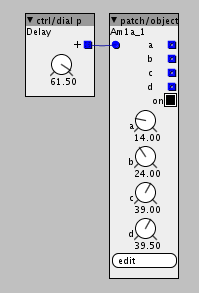@Blindsmyth
If you for example want distribute 4096 samples within 0-64 do this:
64/4096 = 0,015625
So ONE sample out of 4096 on a scale on 0-64 is 0,015625
Then if you want to set the actual length to 4019 samples, do this:
0,015625*4019 = 62,796875
So if you have set the delay size overall size for 4096 and yo want to set the actual delay to 4019 on a scale of 0-64 the result is that you need to set the dial for 62,796875.
Let's do another one, to make it clear:
Delaysize is 2048
And you want to set a value 0f 1867 on a scale of 0-64
First do again:
64/2048 = 0,03125
So ONE sample out of 2048 is on a scale of 0-64 = 0,03125
Then to find out what to set the dial to, to get a value of 1867:
0,03125*1867 = 58,34375
So to set a value of 1867 out of 2048 on a scale of 0-64 set the dial to 58,34375
So yes, I would say you got it right 



